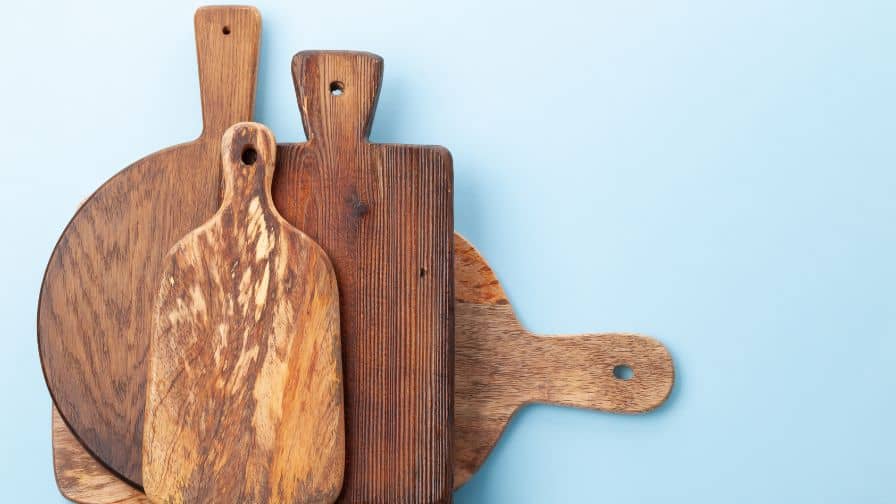
If you’re looking for an interesting wood to work with, Osage orange is a great option! This unique wood is found in North America and is known for its beautiful color and durability. In this blog post, we will discuss seven fascinating facts about Osage orange wood. We’ll also provide an overview of what this wood is like to work with, so you can decide if it’s the right choice for your next project!
7 Fascinating Facts About Osage Orange Wood
If you are looking for an interesting wood to work with, Osage orange is a great option! In this article, we will discuss seven fascinating facts about Osage orange wood.
1. Osage orange wood is named for the Osage Native American tribe, who used the tree’s wood to make bows and other weapons.
2. The Osage orange tree is actually a member of the mulberry family!
3. The wood is very strong and hard, making it great for many different projects.
4. Osage orange wood has a beautiful, unique grain pattern that is truly one-of-a-kind.
5. The wood is also very rot-resistant, meaning it will last for many years with proper care.
6. Osage orange trees are actually pretty rare, so the wood can be quite expensive.
7. Osage oranges have a very fruity citrus-like aroma that many people find pleasing.
Overall, Osage orange wood is a great option for anyone looking for a unique and durable wood. The seven facts above should give you a better idea of what this wood is all about!
What Is Osage Orange Wood And Where Does It Come From?
Osage orange wood, also known as bois d’arc or bowwood, is a hardwood that comes from the Osage-orange tree. The tree is native to the Great Plains region of North America, and its wood has been used by Native Americans for centuries. Today, osage orange wood is still used for a variety of purposes, including making bows and arrows, furniture, and other woodworking projects.
The Osage-orange tree is a small deciduous tree that can grow up to 60 feet tall. The tree has thick bark that is dark orange-brown in color. The leaves of the tree are oblong and have a waxy texture. The flowers of the tree are small and green, and they grow in clusters. The fruit of the tree is a yellow-green drupe that is about the size of a tennis ball.
Osage orange wood is very strong and dense. It is sometimes used as a substitute for hickory wood. The wood also resists rot and decay, making it a good choice for outdoor projects. Osage orange wood can be difficult to work with because it is so hard. It is important to use sharp tools when working with this type of wood.
If you are looking for a strong and durable wood for your next project, consider osage orange wood.
Subscribe to Wordsnwood (Art Mulder)
What Are The Characteristics Of Osage Orange Wood, And How Does It Differ From Other Woods?
Osage orange wood is a hard, dense wood that is very strong and stiff. It is yellow to orange in color, and is often used in furniture and cabinetry. Osage orange wood is also rot and insect damage resistant. This makes it a good choice for outdoor projects.
Osage orange wood differs from other woods in a few ways. First, it is much harder and denser than most other woods. This makes it a good choice for projects that require strength and durability, such as furniture or cabinets.
Secondly, osage orange wood is more resistant to rot and insect damage than many other kinds of wood. This makes it a good choice for outdoor projects or for any project where the wood will be exposed to the elements. Finally, osage orange wood has a distinctive yellow-to-orange color that can add a unique look to any project.
How Do You Work With Osage Orange Wood, And What Tools And Supplies Do You Need?
Osage orange wood is a beautiful, strong, and dense material that has many uses in woodworking. It’s perfect for making furniture, flooring, cabinets, and even cutting boards.
But working with osage orange wood can be challenging because it’s so dense and hard. That’s why you need to use the right tools and supplies and take some special precautions.
Here’s what you need to know about working with osage orange wood:
The first thing you need to do is find some good quality osage orange wood. This can be difficult because the tree is not very common. You may be able to find it at a specialty lumberyard, or you may have to order it online.
Once you have your osage orange wood, you need to prepare it for use. This means cutting it into manageable pieces and sanding it smoothly. Use a sharp blade when cutting, and take your time to get a smooth finish on the sanding.
When you’re ready to start working with osage orange wood, you need to use sharp tools. This includes a saw, chisels, and router bits. It’s also important to use good quality wood glue because osage orange wood is very dense and may be hard to glue.
Now you’re ready to start working with osage orange wood. You can use it for a variety of projects, including furniture, flooring, cabinets, and cutting boards. Just make sure you use the right tools and supplies, and take some special precautions.
Subscribe to Pops Knife Supply
What Are Some Project Ideas That Can Be Made With Osage Orange Wood?
Osage orange wood is a beautiful, strong, and versatile material that can be used for a variety of projects. Here are just a few ideas to get you started:
- Build a piece of furniture: Osage orange wood is perfect for building sturdy pieces of furniture like tables, chairs, and cabinets.
- Create a custom cutting board: With its strong and durable properties, osage orange wood makes for an excellent cutting board material. You can even have it engraved with a special message or design.
- Make a set of coasters: These unique coasters would make for a great gift or addition to your own home décor.
- Construct a birdhouse: This would be a fun project for the kids or grandkids. Just make sure to use non-toxic paint and sealant.
These are just a few ideas of what you can do with osage orange wood. Get creative and see what else you can come up with!
How To Care For Your Finished Project Made With Osage Orange Wood
Osage orange wood is a beautiful, unique wood that makes stunning projects. It’s also a very durable wood, so your finished project will last for years to come with proper care.
Here are some tips on how to keep your Osage orange wood project looking its best:
1. Avoid exposing the wood to excessive moisture. This can cause the wood to warp or crack.
2. If the wood does get wet, dry it off as soon as possible.
3. Avoid placing your Osage orange wood project in direct sunlight. The UV rays can cause the wood to fade over time.
4. If you do need to place your project in direct sunlight, make sure to rotate it every few months so that all sides are evenly exposed to the sun.
5. Once every few months, you should apply a fresh coat of beeswax or another natural oil to keep the wood from drying out and prevent cracking.
6. Avoid using harsh chemicals or cleaners on your Osage orange wood project. These can damage the wood and cause it to break down over time.
7. If you do need to clean your project, use a mild soap and water solution.
8. Store your Osage orange wood project in a cool, dry place when not in use. This will help prevent the wood from warping or cracking.
By following these simple care tips, your Osage orange wood project will last for many years to come!
Is Osage Orange A Hardwood?
Osage Orange is a hardwood. It’s known for its strength and durability, which is why it’s often used in construction and furniture making.
Subscribe to Firewood at the Furnace
Is Osage Orange A Good Firewood?
Osage Orange is good firewood. It’s known for its strength and durability, which makes it great for burning. It also has a high heat output, so it’ll keep you warm all night long.
How Long Does Osage Orange Wood Take To Dry?
Osage orange wood is a slow-drying wood, which means it can take six months to two years to fully dry out, depending on the size of the piece. If you’re in a hurry, you can try kiln-drying the wood, but be aware that this process can cause the wood to warp or crack.
Do Termites Eat Osage Orange?
Of all North American timbers, this is the most decay-resistant. It’s also immune to termites, making it an ideal choice for outdoor construction projects. So, if you’re looking for a durable, long-lasting wood, Osage Orange is a great option.

Can Osage Orange Wood Be Used For Cutting Boards?
Osage orange wood makes an excellent cutting board. It’s extremely hard and durable, so it won’t dull your knives. Plus, it’s naturally antibacterial, so it’s perfect for food prep.
So if you’re looking for a top-quality cutting board, osage orange wood is a great option. Just be sure to oil it regularly to keep it looking its best.
Does Osage Orange Wood Rot?
Osage Orange is a hardwood, and as such, it is resistant to rot. The wood’s resistance to rot makes it an ideal choice for construction projects in areas where the tree is native. The wood is also resistant to insects and decay, which makes it a good choice for outdoor furniture.
What Is The Lifespan Of An Osage Orange Tree?
The lifespan of an Osage Orange tree is around 130 years. This slow-growing tree is native to North America. The wood of the Osage Orange tree is very strong and durable, making it a popular choice for fence posts and other construction projects.
Subscribe to permavations
Osage Orange Wood Vs Mulberry Wood
When it comes to wood, there are many different options to choose from. If you’re looking for a durable option that will last for years, you may be wondering if Osage Orange wood or Mulberry wood is the better choice. Here’s a look at the key differences between these two types of wood:
Osage Orange wood is known for its durability and strength. This makes it a great choice for outdoor furniture or projects that will see a lot of wear and tear. Mulberry wood is also durable, but it’s not as strong as Osage Orange. However, Mulberry is more flexible, which can be an advantage for certain projects.
Osage Orange wood has a distinctively orange-brown bark. The bark is deeply furrowed between rounded ridges. The furrows are brighter than the gray-brown ridges. Mulberry wood has golden-brown bark that becomes lightly fissured with age. It forms long, flat ridges eventually.
So, which is the better choice? It depends on your needs. If you’re looking for a durable, strong wood, Osage Orange is a great option. If you need a more flexible wood, Mulberry may be the better choice.



